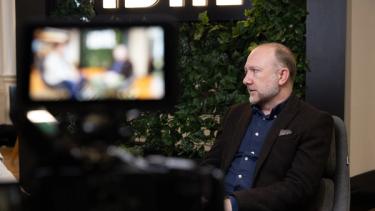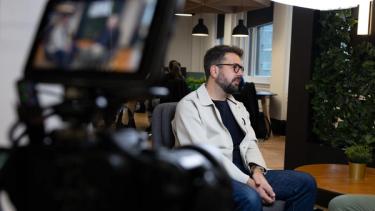Insight6 min read
Audience first: a recipe for success
Wed Mar 10 2021 | Marketing Team

- Insight
- Performance
- Paid media
Tags
There’s one thing that connects all paid media channels – your audience. Placing the same message across various paid media channels - whether that’s social platforms, display campaigns, Google search ads, Google discovery ads, Shopping ads or video campaigns – can amplify your paid media efforts, optimise your spend and target people while they actively search, browse and consume content. Taking an audience first approach to paid media unlocks the real potential behind this tactic. In many ways, it’s about knowing your audience more than they know themselves. In this blog, we cover the impact an audience led strategy can have on driving conversions.
Audience-led channel selection
An audience first approach uses your audience to inform your strategy. Rather than targeting each channel in silo, you can build a connected strategy based on audience data which leads you towards the best channels. For this to be successful, you really have to get to grips with who your audience is and analyse exactly what’s driving results. Once you’ve found an audience that works for your goals, you can then work to scale it and place your ads in front of even more like-minded people. It becomes less about wanting to ‘do’ Facebook advertising or Sky AdSmart campaigns, and more about amplifying your audience across various platforms. After all, you don’t want to pay to show your ad to 1 million people that won’t convert - you want it to be shown to the 10 thousand people who will.
Audiences and the digital funnel
With countless audience types available, targeting options have the potential to get extremely confusing, extremely quickly. But, if you focus on segmenting your audience types by the different stages of the funnel, it makes the whole concept much simpler.
- Top of funnel: During this first stage of the customer journey – known as the awareness stage - your audience might not know your brand yet, but their behaviour suggests an interest in what you offer. If your objective is to increase brand awareness and generate traffic to your site, you need to be targeting larger audiences. Google’s affinity audiences or Facebook’s interest audiences would be ideal for this kind of campaign.
- Middle of funnel: Moving further down the funnel, users already know what they want at this stage but they’re still researching who to convert with. During the middle of the funnel, two things usually occur, firstly, the discovery. At this point, users already know what they want but they’re still researching who to convert with. Then comes consideration which involves users being in the mix – at this point it’s only a matter of time before they decide who they are going to convert with. This is an appropriate stage to consider Google’s in market audiences. With this audience type, Google has already collated audiences based on behaviours, trends and the likelihood of a user converting.
- Bottom of funnel: The final stage of the funnel, this is the point where the user takes action, and a conversion is made. While this stage is extremely important, many businesses make the mistake of focusing all their efforts on this phase. However, without consideration of upper funnel audiences, it becomes much harder to encourage users to take action. Audiences within the action stage can be amplified with remarketing using your customer data. Using machine learning to build lookalike audiences, you can target people who closely resemble your existing audience.
Audience first, always
Stacking these audiences together is your recipe for paid media success. Let’s dive into this a little deeper with a real-world example:
- 1Imagine your PPC is performing well for the keyword ‘white trainers’. Through analysis, we find that conversion rates are higher for users with an affinity to fitness or who are in the market for shoes.
- 2From this insight, efforts can be maximised ensuring search impression share is as high as profitably possible against specific keywords for a specific audience.
- 3Now, using this data, you could then also direct media spend towards building a Facebook campaign that targets a similar audience with an interest in fitness and shoes.
- 4When that’s successful, you can take it one step further. We now know this audience is working extremely well across search and social. Why not apply the same strategy to video? You could launch YouTube campaigns to target the same audience type across another channel.
- 5And why stop there? That same video creative could then be adapted and used with Sky AdSmart to target households with an interest in sport when watching TV.
Our strategies are led by the people behind the screens. You don’t even need to start with a specific channel. If you have a limited marketing budget that you want to really make the most of, use your audience data to generate an understanding of exactly who your customers are and then start testing on different channels. An audience first agency, we’re channel agnostic and understand that the intent behind the click is triggers lasting success. Reaching your potential customers, wherever and however they browse, our strategies use audiences rather than siloed targeting to connect your paid channels and drive conversions. If you want to find out more about our approach and how to make the most of your paid media activity today, get in touch.


